Disclosure: Meeple Mountain received a free copy of this product in exchange for an honest, unbiased review. This review is not intended to be an endorsement.
What is a shelfie exactly?
Glad you asked.
According to Dictionary.com “A shelfie is a picture of a shelf, especially a bookshelf that shows off someone’s books, movies, art, collectibles, special belongings, etc.” A portmanteau of the word “shelf” and “selfie”, shelfies have become a popular way for people to share a little about themselves online without having to say a single word. You can look at a person’s shelves and instantly know how likely you are to find compatibility and/or comradeship with them. It’s true for books and it’s true for board games. One look at a person’s shelf and you know a lot about them. Or so you think. A person’s shelf is a carefully cultivated thing. You’re only seeing what they want you to see.
Shelfie Stacker explores this aspect of the shelfie effect. It’s a sort of meta-game of the shelfie experience, the behind-the-scenes footage if you will. In Shelfie Stacker, players are board game enthusiasts unpacking boxes of the latest and greatest games and attempting to fit them onto their shelves in the neatest, most presentable way possible. Doing this well scores a lot of points and the person that manages to score the most wins the game.
Shelf Construction
Here’s what a game of Shelfie Stacker looks like once it’s all set up:

If I were more like IKEA, purveyor of the beloved Kallax, I would just leave you with that image and let you have at it. But I’m a lot nicer than that. In the image above, there are several Delivery Box tiles placed in between the players and these have been seeded with dice randomly drawn from the bag. Next to this have been placed randomly drawn Reward cards, one each of three different types: Sidekick, First to Claim, and End of Game.
Each player has also received a Big Shelf, a Shelf of Shame, and a reference card along with the deck of cards matching their selected color. From this deck of cards, the players will choose exactly half of them to play with and half to return, hidden from their opponents, to the box.
Choose Your Gamer
There are three main mechanics that drive the action in Shelfie Stacker: the card selection, the dice draft, and the dice placement. Each player is provided a nearly identical deck of 16 numbered Character cards ranging from 1 to 16. Each card represents a different character archetype with its own unique abilities.
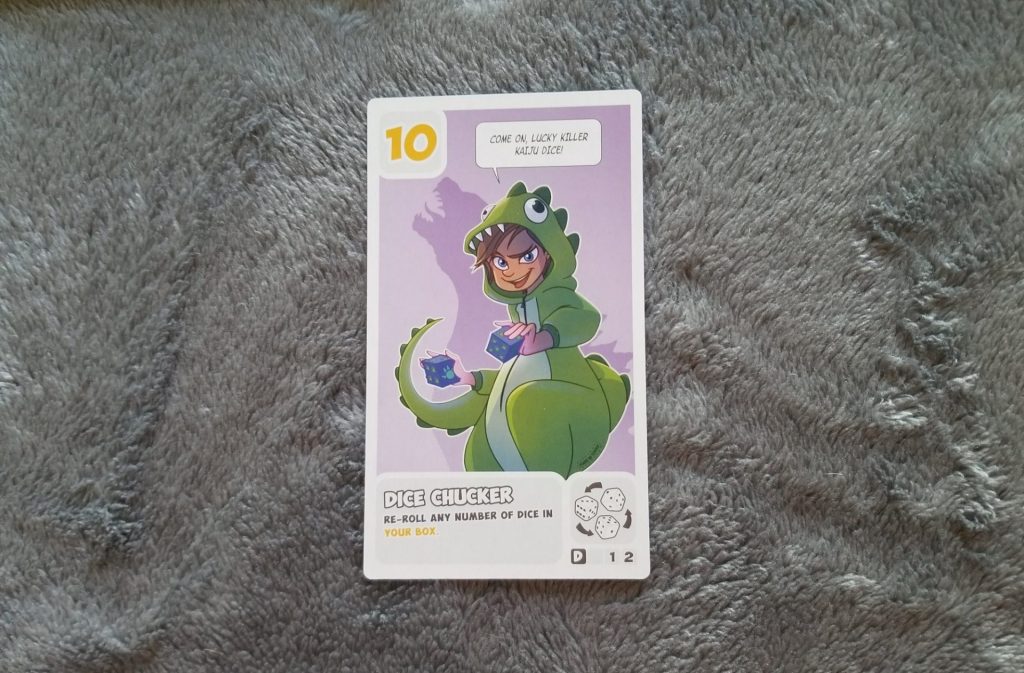
Card #10, the Dice Chucker, for instance, allows you to reroll any number of dice in your Delivery Box (terminology which we’ll get to momentarily). By playing this card from your hand at the beginning of the round, you are not only selecting it for its ability, but you are also selecting it for its initiative value of 10. This means that any players that played cards with lower numbers will go first. And if someone else plays their #10 card, there’s a tie breaker built into the card, a letter A, B, C, or D (hence the ‘nearly identical’).
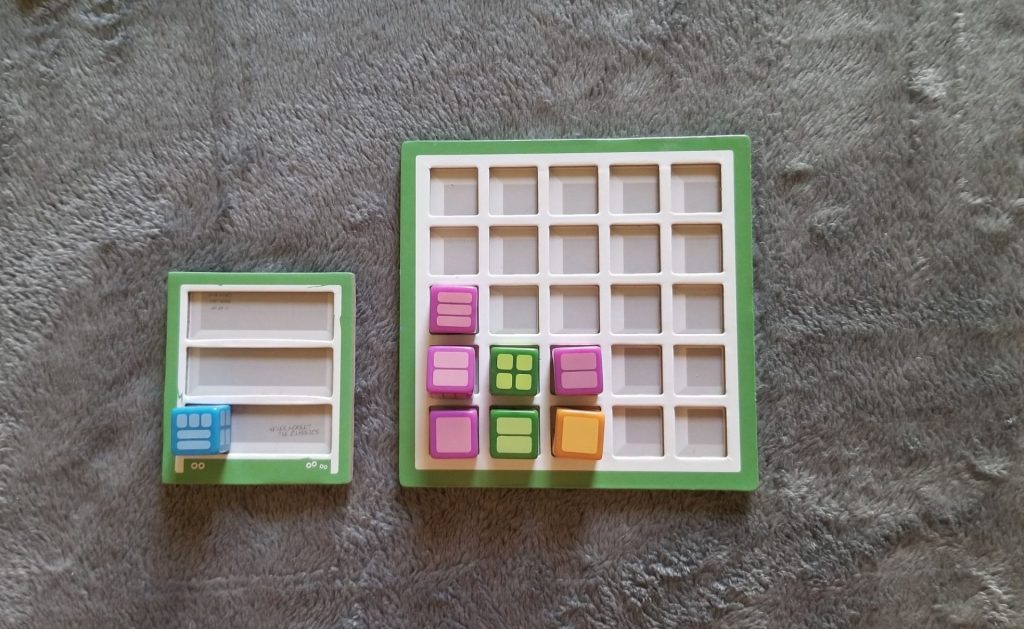
At the beginning of each round, the players will be selecting a card from their hand to put into play face down before simultaneously revealing the card once everyone has selected a card to play. It is important to note that a player is not required to use the ability of the card they have selected immediately. They can choose to set it aside until later.
Choose Your Games
Once each player has revealed their card, they will then take turns collecting all the dice from a single Delivery Box tile. Then, without changing their values, they will fit them onto their shelf as best they can.
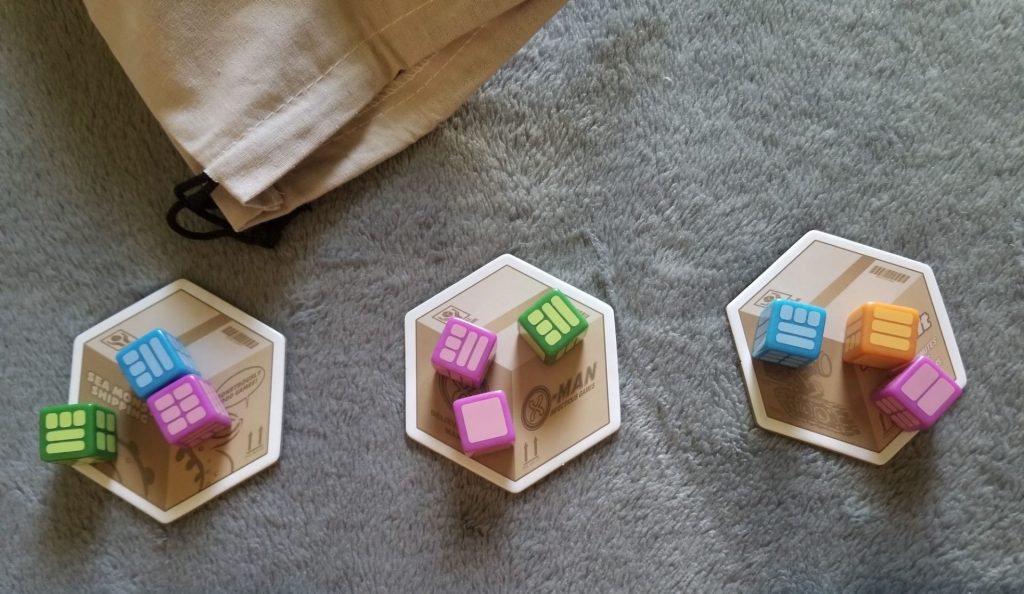
Now Cram Them Onto Your Shelf
There are four colors of dice–orange, pink, green, and blue–and each has between 1 and 6 blocks printed on it. Each Big Shelf is divided into a 5 x 5 grid and there are some strict placement rules in effect that will determine how you add your dice to this shelf:
1. Dice must be placed in such a way as to fill a column from the bottom to the top.
2. Each column must contain the same color of dice.
3. From the bottom up, each die placed must be of a higher value than the previously placed die.
4. Sixes are wild. If you’ve drafted a six, you can change it to a value of your choosing before placing it onto your shelf.
Any dice that you draft that cannot be legally placed are placed onto your Shelf of Shame instead. These will cost you 2 points each at the end of the game.
Aside from that placement criteria, there are some other factors that may determine which dice you take and where you place them: the Reward cards. The first type, the Shelfie Sidekick, is awarded to the person that currently meets its criteria the best. This means that it can travel from person to person (similar to the Longest Road card in Catan) over the course of the game. These cards are looking for specific colors.
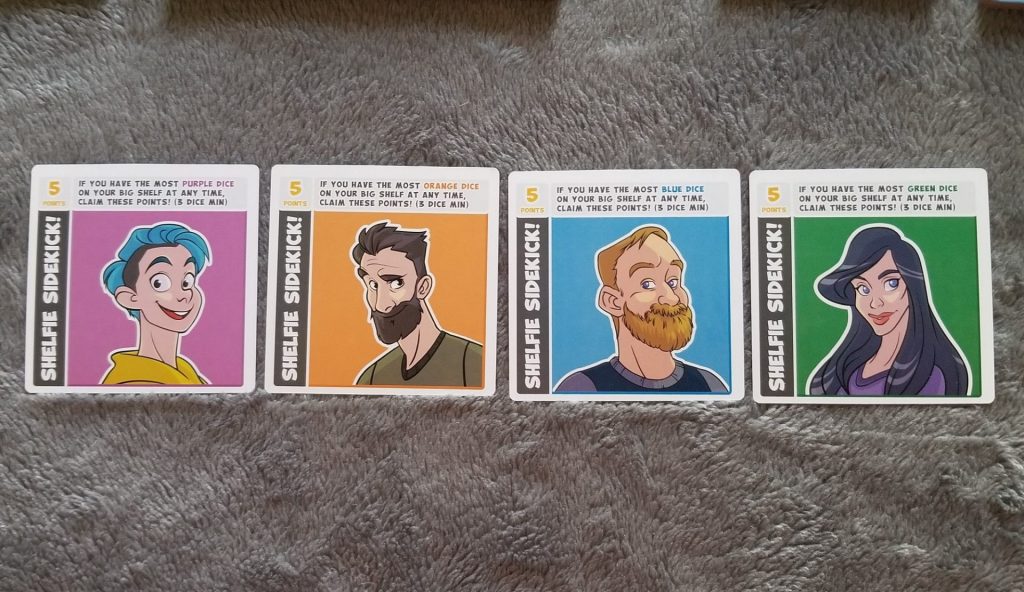
The second type, the First to Claim, is awarded during the course of the game to the first person that is able to meet its criteria. These cards are looking for dice placed in specific patterns.
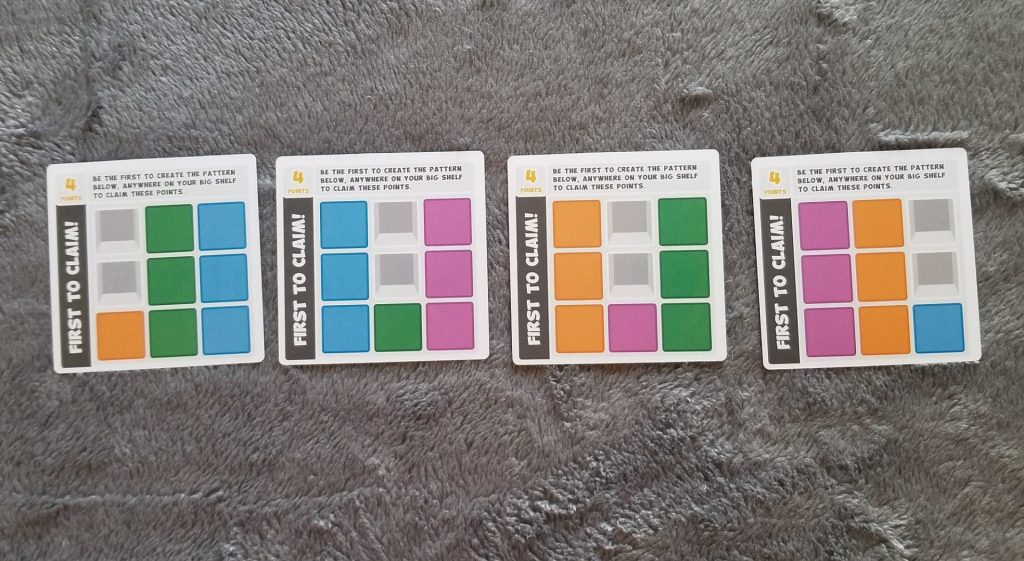
The last type of Reward card, the End of Game, is awarded to everyone that meets its criteria and, depending on the criteria, may even be awarded multiple times (i.e. – three points for each column consisting of three dice or less).
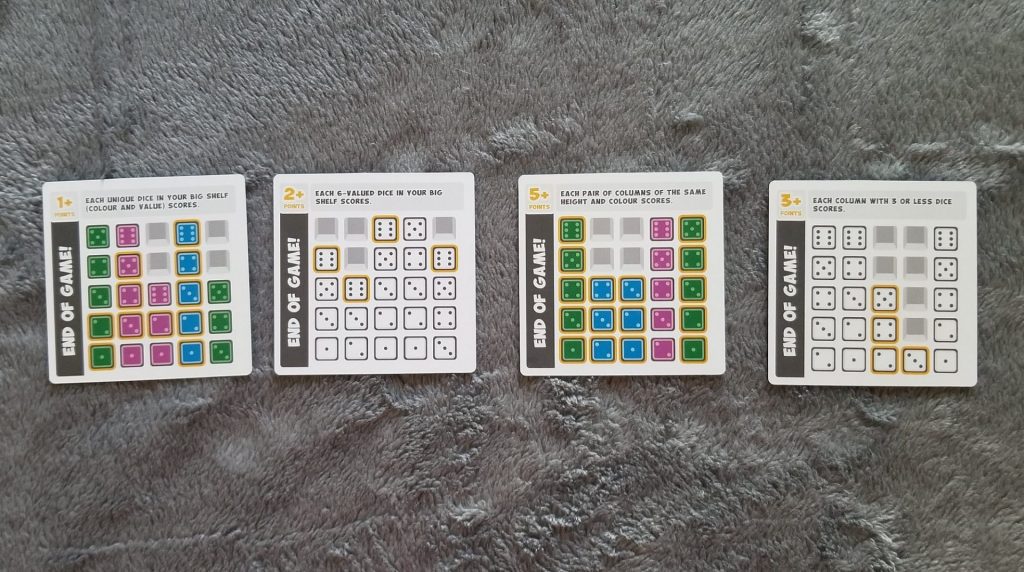
Thoughts
One of the first games that I was introduced to shortly after getting into this glorious hobby back in the early 2000s was RoboRally, a fast paced, often hilarious, robot race that has the players trying to guide their robots across a factory floor, littered with objects and obstacles that no factory floor should be littered with, in a race to capture a series of flags before their opponents can. The game uses a clever hidden action programming mechanism in order to pull it off. I was given a hand of cards with simple directions on them (move forward 1 space, turn left, turn right, etc.) along with a number and told to program out my robot’s turn by laying the cards face down in a sequence of my choosing.
Once everyone had selected their cards, they would simultaneously reveal what they’d selected. And that’s when the fun would begin. The smaller numbers always went first, followed by the next highest, etc.This would often cause the players’ robots to collide into each other with amusing results. My clever idea to progress to the end of a hallway and turn left would invariably wind up with my robot riding a conveyor belt into an abyss while spinning in useless circles, forcing me to have to start all over again. What you’d hoped to achieve was usually far afield from the reality of what you actually achieved. The most you could conceivably hope for was that you’d at least end your turn in a favorable position or, barring that, one that wasn’t too unfavorable.
I loved this mechanic. The constant worrying over what my opponents were going to do, trying to decide whether to go all in on huge movements or take it slower to avoid colliding with everyone else created a wonderful anticipation. Most of the game was played out in that programming phase, even though most of the visible action took place on the factory floor. Flipping over my cards and realizing I’d correctly guessed what my opponents might do made me feel like the cleverest person alive. It was a good feeling.
This hidden action programming mechanic is what initially caught my eye when Shelfie Stacker and I first crossed paths. Then, when I saw that it was a game designed by Shem Phillips, I knew I had to have it. With notches for games like Raiders of the North Sea and Architects of the West Kingdom in his belt, there was no doubt in my mind that I was going to like this game. What I couldn’t have guessed was just how much I’d like it.
Firstly, let’s talk about the characters in this game. They’re not just lifeless figures printed on cardboard. They’re you. They’re me. Each card that I have encountered in this game has caused me to nod my head knowingly. I know someone like this. This is me! Is Shem Phillips hiding in my closet and watching me? In Shelfie Stacker, Shem Phillips manages to stride that fine line between poking fun at people and celebrating them for their uniqueness. And that celebration of uniqueness extends beyond just the character archetypes. Shelfie Stacker is a game that knows that representation matters. This is reflected both in Claire Tobin’s fantastic artwork, filled with men and women of every color and creed, and the choice to go with color blind friendly colors.
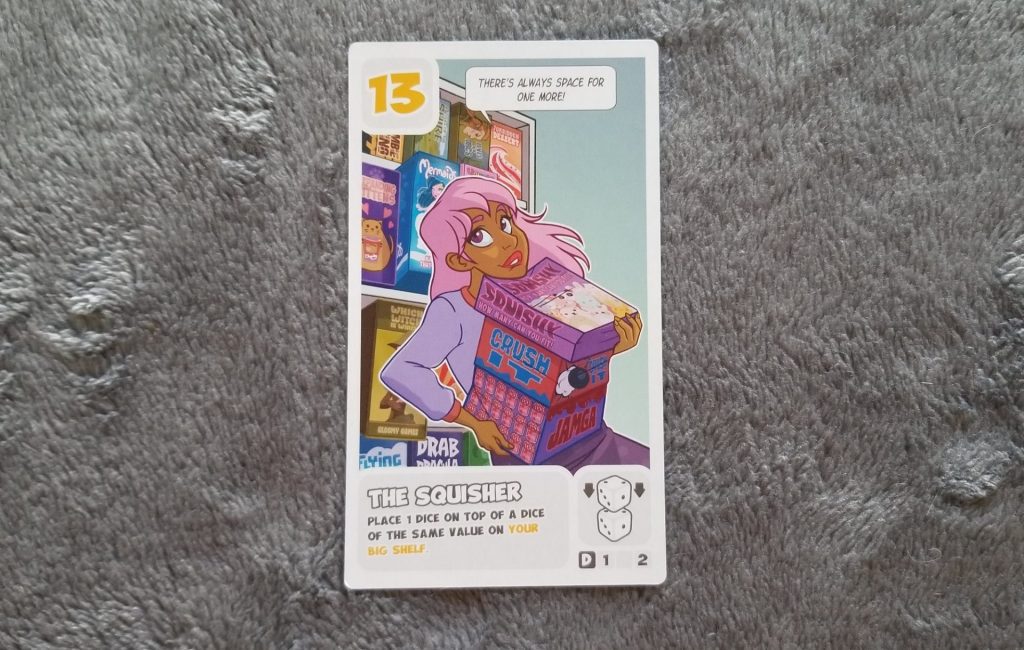
Mechanically, the game is pretty brilliant, too. The hidden action selection mechanism in Shelfie Stacker isn’t as important as I thought it would be, but it still plays a major role. Going early in turn order can be of critical importance. It’s just the worst when you’re forced to take dice that stink. But, at the same time, having access to a high powered Character card’s ability early in the game might be worth the risk. Shelfie Stacker is just as much about timing the usage of these abilities as it is about drafting the best dice. These decisions are never easy and they’re made all the more difficult by having to choose which abilities you’ll even have access to before you even begin playing.
And I haven’t even talked about the spatial management aspect. Shelfie Stacker’s as much about choosing what to do with your dice right now as it is having to plan for what you hope to achieve with your dice in the future. Clever players will already have taken less than desirable dice drafts into account and will have already set themselves up to deal with them when they come along.
This game checks all of the boxes for me and I’m hard pressed to find anything to criticize. If I had to come up with one thing it would be that Shelfie Stacker’s almost a little too targeted. Board game enthusiasts will enjoy the subtle in-jokes presented in the various Character card archetypes, but people not familiar with the hobby may find themselves on the outside looking in, oblivious to the humor. But if the only criticism is “You’ve done a great job of representing your audience”, is that really a criticism at all?


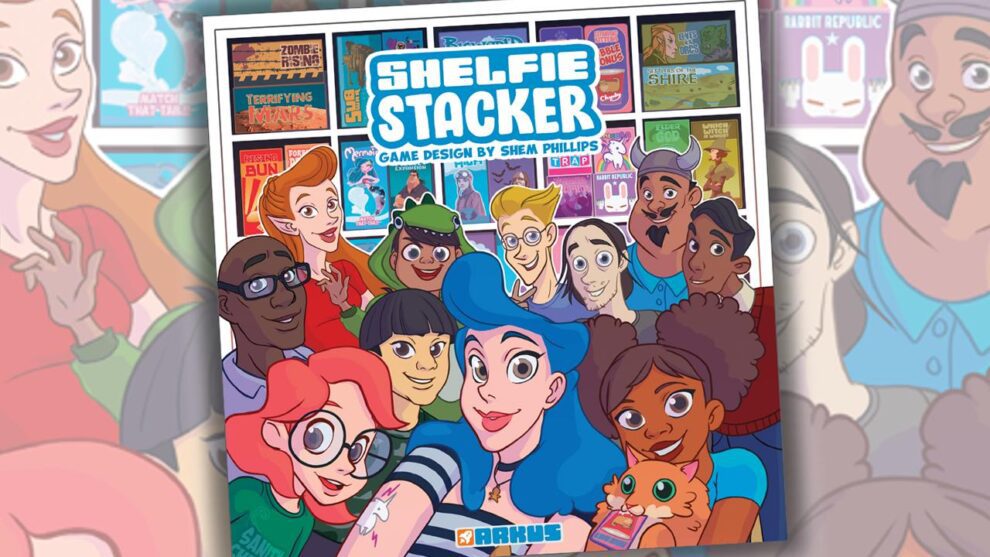









Add Comment